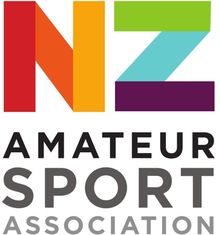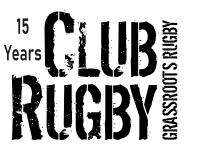A brief history of professionalism in rugby

Above: Henry Roberts from Poneke RFC, New Zealand's first recognised professional player, circled.
The article below was publshed in the recent St Patrick's College, Wellington, Rugby Football Club newsletter.
Professionalism in Rugby Union has a long and interesting history, going back at least 130 years.. This article recounts the advent of professionalism in the nineteenth century and its impact on the burgeoning game in New Zealand.
In 1885, 220 representatives of Association Football (Soccer) Clubs from all parts of England met to settle the question of whether or not professionalism should be legalised. Since football had first become popular in England (in the late 1870's), players from Scotland (where the game had been played for a slightly longer time), had been lured with offers of employment to Northern England to boost new English Clubs.
In September of 1885, The English Football Association legalised the employment of professional football players, subject to certain restrictions.

One critic of the move noted that "at one time football was played for the love of the game, and every player stuck closely to his parent club, was jealous of its prestige, and endeavoured by every legitimate means to advance its welfare, not only on the field, but also from a social point of view."
The following year (1886), the Rugby Football Union (RFU, formed in 1871), adopted a Code concerning professionalism, the first clause of which stated that "professionalism is illegal". A "professional" was defined as any player who received any form of money consideration. This caused some confusion, given some Association Football players (who were professional), also played Rugby Union as amateurs.
On 25 April 1887, the Wellington Rugby Union (WRFU, also formed in 1871) was the first of New Zealand's major Provincial Unions to adopt the Rules of the RFU regarding professionalism. Two years later, in 1889, two well-known Poneke players and Wellington representatives, Henry McIntyre and Henry Roberts, were charged with professionalism by the WRFU.
It was reported that Roberts had been approached to transfer both players' services from Poneke to the Wellington Football Club, with each player offered 30 pounds to do so. The case was referred to the RFU in England, which ruled that the professionalism laws had been broken.Both players were suspended by the WRFU for a season and subsequently decided to retire permanently from the game.
Roberts, who brokered the offer, can be correctly identified as New Zealand's first professional rugby player.
In 1893, a proposal to legalise professionalism in Rugby Union made by Yorkshire County was rejected by the RFU by 282 votes to 146. Four years later in 1897, the Northern Counties of the RFU (22 Clubs from Cheshire, Lancashire and Yorkshire), as a result of not being able to attract young players into their clubs owing to payments from Association Football, broke away from the RFU and formed the Northern Rugby Union, allowing players to receive payments in certain conditions.
The renegade clubs eventually became known as the "Northern Rugby League", allowing both amateur and professional players. Over the next few years, the progressives from the North of England introduced a number of initiatives to improve the game, for which today's game of Rugby Union can be thankful.
Firstly, it was the Northern Rugby League which introduced the oval ball (rather than a round-ball) to the game of rugby. Interestingly, the concept of an oval ball came to England from the United States in 1889, where rugby had been played in various forms since the 1870's and had much earlier become a running and passing game - the forerunner of today's NFL. (Rugby Union in the early days was a kicking game first and foremost, hence the ongoing use of a round-ball.)
The Northern Rugby League also created the rule to award more points for a try than a conversion and the rule to re-start play following a try, with a kick from the centre of the field. Other initiatives introduced which did not gain traction in Rugby Union were the use of two referees and the abolition of line-outs.
These innovative rules and the concept of permissible payments eventually become known more permanently as "Rugby League".
Steven White, 19 Mar 2019
Adam Julian, 19 Mar 2019
Steven White, 12 Mar 2019
Adam Julian, 04 Mar 2019
Steven White, 12 Feb 2019








.jpg)





